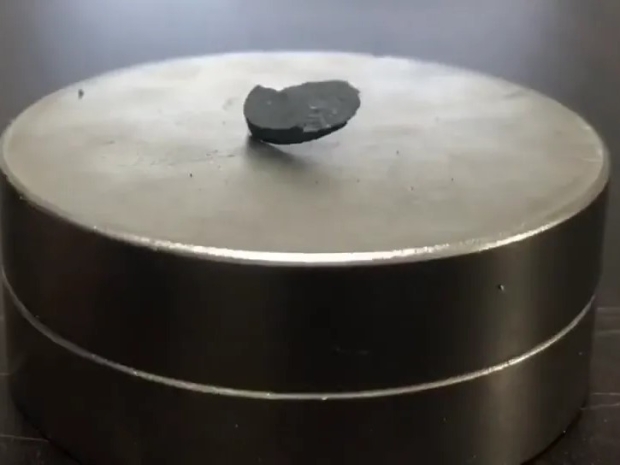For a while, it was thought that LK-99, a compound of copper, lead, phosphorus and oxygen, might be the first superconductor that works at room temperature and ambient pressure as an initial paper did prove promising.
The most striking evidence for LK-99's superconductivity was a Korean team video showing a coin-shaped sample of silvery material wobbling over a magnet. The team said the sample was levitating because of the Meissner effect -- a hallmark of superconductivity in which a material expels magnetic fields.
Instead, studies have shown that impurities in the material -- in particular, copper sulphide -- were responsible for the sharp drops in electrical resistivity and partial levitation over a magnet, which looked similar to properties exhibited by superconductors.
Inna Vishik, a condensed-matter experimentalist at the University of California"I think things are pretty decisively settled at this point."
For those who came in late, the LK-99 saga began in late July, when a team led by Sukbae Lee and Ji-Hoon Kim at the Quantum Energy Research Centre, a start-up firm in Seoul, published preprints claiming that LK-99 is a superconductor at standard pressure and temperatures up to at least 127C (400 kelvin).
All previously confirmed superconductors function only at extreme temperatures and pressures. The extraordinary claim quickly grabbed the science-interested public's and researchers' attention, some of whom tried to replicate LK-99.
Initial attempts did not see signs of room-temperature superconductivity but were not conclusive. Now, after dozens of replication efforts, many experts confidently say that the evidence shows LK-99 is not a room-temperature superconductor.
The South Korean team based its claim on two of LK-99's properties: levitation above a magnet and abrupt drops in resistivity. But separate teams in Beijing, at Peking University and the Chinese Academy of Sciences (CAS), found mundane explanations for these phenomena.
Another study, by US and European researchers combined experimental and theoretical evidence to demonstrate how LK-99's structure made superconductivity infeasible. And other experimenters synthesized and studied pure samples of LK-99, erasing doubts about the material's structure, and confirming that it is not a superconductor, but an insulator.
Multiple unverified videos of LK-99 levitating subsequently circulated on social media, but none of the researchers who initially tried to replicate the findings observed any levitation.

